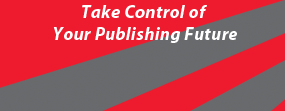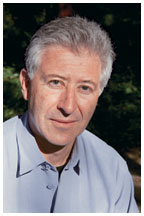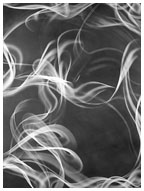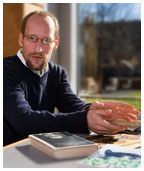February 14, 2007: Books and Arts
Japan’s lost generation
Michael Zielenziger ’77 explores Japan’s social malaise
Opening up the insular poetry
world
David Orr ’96 writes about poetry for nonpoets
Poetry reactions:
What? Eh? Hm ...
For a complete list of books received, click here.
Reading
Room
Japan’s
lost generation
Michael Zielenziger ’77 explores Japan’s social
malaise
Journalist Michael Zielenziger ’77 found that some of Japan’s young adults are opting out of traditional norms. (Random House) |
By Maurice Timothy Reidy ’97
When Michael Zielenziger ’77 started reporting from Japan in 1993 as Knight Ridder’s Tokyo bureau chief, he expected to witness that country’s economic rebirth. Ever since the financial downturn in 1989, the nation had been in a malaise, unable to match the fiscal prosperity it had achieved in the 1980s. It was only a matter of time, Zielenziger thought, before the sleeping giant awoke.
But that has yet to happen, with Japan now experiencing 15 straight years of deflation. The country also faces an array of social problems, including a growing class of jobless young men known as hikikomori, who refuse to leave the cocoon of their parents’ homes, and a falling birth rate, due in part to women in their 20s and 30s called parasaito, who are reluctant to marry and have children. In Shutting Out the Sun: How Japan Created Its Own Lost Generation, published by Nan A. Talese/Doubleday in September, Zielenziger explores these trends, which threaten to undermine a once-powerful society.
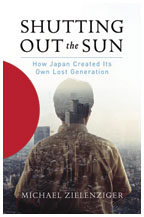 Zielenziger,
who lived in Japan for seven years, found a growing unhappiness among
young Japanese men and women, who were hesitant to assume the roles and
responsibilities expected of them. Some of these young people —
the hikikomori — drop out of school and are unwilling to
enter the workforce. Many Japanese see hikikomori as lazy and
self-indulgent, but some of these young men told Zielenziger they chose
to opt out of Japanese society because it offers few options for those
not willing to follow the traditional paths to success — paying
dues for years working long hours at corporate jobs. There are about one
million hikikomori in Japan.
Zielenziger,
who lived in Japan for seven years, found a growing unhappiness among
young Japanese men and women, who were hesitant to assume the roles and
responsibilities expected of them. Some of these young people —
the hikikomori — drop out of school and are unwilling to
enter the workforce. Many Japanese see hikikomori as lazy and
self-indulgent, but some of these young men told Zielenziger they chose
to opt out of Japanese society because it offers few options for those
not willing to follow the traditional paths to success — paying
dues for years working long hours at corporate jobs. There are about one
million hikikomori in Japan.
Parasaito have lodged their own kind of protest against traditional Japanese norms. These young women do not want to give up their jobs to marry and have children. Instead, they work and spend money freely. According to Zielenziger, roughly 90 percent of women in their late 20s and 60 percent in their late 30s are parasaito. Their refusal to have children — coupled with the society’s failure to accommodate a new class of working women and the lack of immigrants to Japan — has contributed to a decline in Japan’s birth rate. By 2020 Japan will have the oldest population among developed nations, writes Zielenzieger.
Japan’s rigid society also has contributed to the country’s economic woes, Zielenziger argues. Japan prospered in the 1980s by cultivating a “closed and regimented world ... where foreign investors were systematically kept at bay.” Nonconformity and individual initiative were discouraged. Yet when “a wholly new system of global commerce appeared — one involving innovation, adaptability, and creativity — it proved especially unnerving to this Japanese regimen,” writes Zielenziger, who was a Woodrow Wilson School major and chairman of The Daily Princetonian. Today he is a visiting scholar at the Institute of International Studies at the University of California, Berkeley.
In Shutting Out the Sun, Zielenziger does not offer prescriptions
for solving Japan’s problems. Instead, he hopes to shed light on
these issues that few Japanese are talking about. “I am saying things
about Japan and Japanese society that the Japanese find very difficult
to say about themselves,” he says. ![]()
Maurice Timothy Reidy ’97 is online editor of America magazine.
For a complete list of books received, click here.
 Master Traders: Strategies for Superior Returns from Today’s Top
Traders — Fari Hamzei ’78 (John Wiley & Sons).
In this guide for private and professional investors, Hamzei and traders,
hedge fund managers, and market analysts offer strategies to use when
analyzing the markets and investing in stocks, options, and futures. Hamzei
is founder of Hamzei Analytics LLC, which provides proprietary analysis
and indicators to institutional and professional traders.
Master Traders: Strategies for Superior Returns from Today’s Top
Traders — Fari Hamzei ’78 (John Wiley & Sons).
In this guide for private and professional investors, Hamzei and traders,
hedge fund managers, and market analysts offer strategies to use when
analyzing the markets and investing in stocks, options, and futures. Hamzei
is founder of Hamzei Analytics LLC, which provides proprietary analysis
and indicators to institutional and professional traders.
 The Translation
of Dr Apelles: A Love Story and Native American Fiction: A User’s
Manual — David Treuer ’92 (Graywolf Press). In Treurer’s
novel, a lonely Native American translator, Dr Apelles, stumbles across
an ancient manuscript. The document tells the love story of a young brave
and a princess. While he is translating that story, he, too, falls in
love. In Native American Fiction, Treuer argues that fiction
written by Native Americans should be read as literature first, and not
as authentic windows into Native American culture. Treuer teaches at the
University of Minnesota.
The Translation
of Dr Apelles: A Love Story and Native American Fiction: A User’s
Manual — David Treuer ’92 (Graywolf Press). In Treurer’s
novel, a lonely Native American translator, Dr Apelles, stumbles across
an ancient manuscript. The document tells the love story of a young brave
and a princess. While he is translating that story, he, too, falls in
love. In Native American Fiction, Treuer argues that fiction
written by Native Americans should be read as literature first, and not
as authentic windows into Native American culture. Treuer teaches at the
University of Minnesota.
 Never Saw It
Coming: Cultural Challenges to Envisioning the Worst —
Karen A. Cerulo *85 (University of Chicago Press). Americans tend to focus
on and imagine best-case scenarios, such as winning the lottery, and disregard
and not plan for worst-case scenarios, such as a hurricane destroying
a neighborhood, argues Cerulo. She examines the role of society in fostering
this trait and explores strategies for overcoming it. Cerulo is a sociology
professor at Rutgers University in Piscataway, N.J.
Never Saw It
Coming: Cultural Challenges to Envisioning the Worst —
Karen A. Cerulo *85 (University of Chicago Press). Americans tend to focus
on and imagine best-case scenarios, such as winning the lottery, and disregard
and not plan for worst-case scenarios, such as a hurricane destroying
a neighborhood, argues Cerulo. She examines the role of society in fostering
this trait and explores strategies for overcoming it. Cerulo is a sociology
professor at Rutgers University in Piscataway, N.J. ![]()
By K.F.G.
MORE NEW BOOKS at princeton.edu/paw
New York abstract artist Mark Sheinkman ’85 imbues his artwork with a sense of movement and spatial depth. His swirling lines look like smoke. Using a mixture of oil, graphite, and alkyd (a synthetic resin that speeds drying), Sheinkman created the work at left, titled 11.5.2006, which is part of a solo show at Gallery Joe in Philadelphia running through Feb. 24. The exhibition features 11 of his recent black-and-white works on paper that “blur the distinctions between painting, drawing, and photography,” says Sheinkman. His artwork is included in the public collections of the Museum of Modern Art in New York and the National Gallery of Art in Washington, D.C.
Opening
up the insular poetry world
David Orr ’96 writes about poetry for nonpoets
David Orr ’96 is a reviewer for The New York Times and Poetry magazine. (Ricardo Barros) |
Reading poetry, like experiencing art forms such as opera or postmodern art, takes work and can seem intimidating. Perhaps because of that, relatively few people read poetry, says David Orr ’96, a poetry critic and part-time lawyer in New York City who is spending this year at Princeton as a Hodder Fellow, advising students and writing a book on poetry. Through his reviews and poetry column, On Poetry, in The New York Times Book Review, Orr is trying to draw more nonpoets into the world of poetry.
Sometimes, Orr notes, the way poets and critics write about their craft can sound pompous and self-important, with pronouncements such as: “Poetry is the enemy of falsehood.” Orr rejects that approach. “If you think poetry is terrific and serious, which I do, you can write about it and have fun with it. You don’t need to convince people that it is serious and important,” says Orr, who also reviews for Poetry magazine and received a 2004 National Book Critics Circle Citation for Excellence in Reviewing.
Orr is not suggesting that poetry should be dumbed down or that it is simple. But he wants to make it more accessible to a wider audience, and he does that by writing for “nonpoets and for poets who know that I’m writing for nonpoets” in the Times. Orr’s reviews and columns are witty and informative. He is not afraid to poke fun at the poetry world — poets who work for academic institutions, win awards, and write and talk largely to each other. Orr’s editor at the Times, Dwight Garner, says, “A lot of [poetry] critics out there are writing merely to please other critics, and their reviews can feel very clubby and ...off-putting. ... [Orr’s] voice is probing yet playful and almost entirely jargon-free.”
Practicing civil law part-time helps Orr keep poetry in perspective — and pay the bills. “Anytime [I am] tempted to think poetry is the most important thing in the entire world,” he says, practicing law “will bring [me] back to reality.”
Orr didn’t begin to enjoy poetry until his junior year at Princeton. By mistake he bought a thin volume of poems, Whitsun Weddings, by English poet Philip Larkin. Instead of returning it to the U-Store, he read it. “Larkin is the first poet that I really felt like I got,” says Orr, an English major who wrote his senior thesis on Larkin.
After Princeton, Orr earned a law degree at Yale and began practicing law. All the while he was reading poetry reviews and writing his own poetry. He found critics too nice. They were “extremely cordial at the expense of being forthcoming,” he says. He wondered why they didn’t have more opinions. He sent a review to Poetry magazine in 1998, and the editors published it.
When he reviews for Poetry magazine, Orr is writing for poets and critics. His editor, Christian Wiman, says Orr is “great at getting inside a poet’s work, figuring out exactly what a particular poem intends to do, and then diagnosing whether or not it actually succeeds in doing that. David brings not only an incisive and very well-informed critical intelligence to his reviews, but he also brings a much-needed perspective from outside the poetry world.”
Like his essays for the Times, the book he is working on at Princeton will speak to nonpoets and explore how to read and experience poetry, what poets do, and what they worry about as they write. He’s still tinkering with the structure of the book, but he thinks he will approach it as a travel guide. “If you think about poetry as a place that you go to that you haven’t been to before, I think it’s more helpful,” he says. “You know that if you spend more time there, you’ll probably understand it better.” π By K.F.G.
Poetry
reactions:
What?
Eh? Hm ...
From an Oct. 1, 2006, On Poetry column by David Orr ’96 about a book by the actor Stephen Fry, The Ode Less Travelled: Unlocking the Poet Within:
“Many readers ... often come to an actual poem expecting either to be awed by excellence or overwhelmed by the Raw Passion of It All. They are usually disappointed. ... Only rarely do lay readers experience poems as a cross between an orgasm and a heart attack; usually, the response is closer to ‘What?’ or ‘Eh’ or at best ‘Hm.’ This doesn’t mean that other reactions aren’t possible; but such reactions generally come from learning what exactly is going on. ... You learn what’s going on by reading carefully, questioning your own assumptions, and sticking with things even when you’re confused or nervous.”
© 2006, The New York Times. Reprinted with permission.
